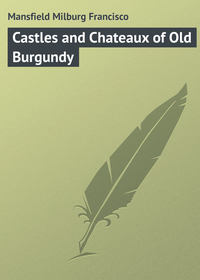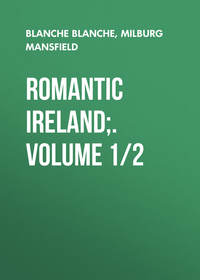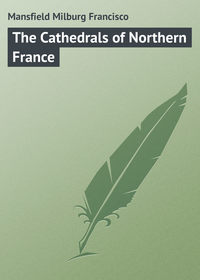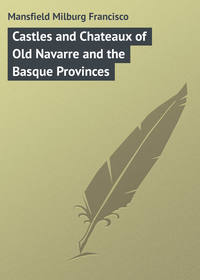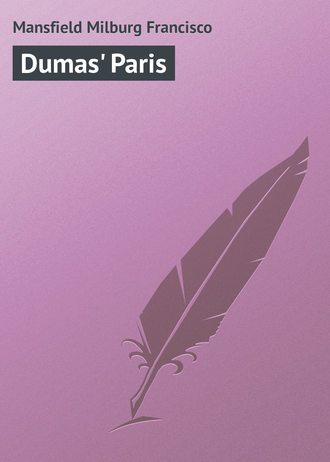 полная версия
полная версияDumas' Paris
Up to the construction of the present fortifications, – under Louis-Philippe, – Paris had been surrounded, at its outer confines, by a simple octroi barrier of about twenty-five kilometres in circumference, and pierced by fifty-four entrances. Since 1860 this wall has been raised and the limits of what might be called Paris proper have been extended up to the fortified lines.
This fortification wall was thirty-four kilometres in length; was strengthened by ninety-four bastions, and surrounded and supported by thirteen detached forts. Sixty-five openings gave access to the inner city, by which the roadways, waterways, and railways entered. These were further distinguished by classification as follows: portes– of which there were fifty; poternes– of which there were five; and passages– of which there were ten. Nine railways entered the city, and the “Ceinture” or girdle railway, which was to bind the various gares, was already conceived.
At this time, too, the Quais received marked attention and development; trees were planted along the streets which bordered upon them, and a vast system of sewerage was planned which became – and endures until to-day – one of the sights of Paris, for those who take pleasure in such unsavoury amusements.
Lighting by gas was greatly improved, and street-lamps were largely multiplied, with the result that Paris became known for the first time as “La Ville Lumière.”
A score or more of villages, or bourgs, before 1860, were between the limits of these two barriers, but were at that time united by the loi d’annexion, and so “Greater Paris” came into being.
The principle bourgs which lost their identity, which, at the same time is, in a way, yet preserved, were Auteuil, Passy, les Ternes, Batignolles, Montmartre, la Chapelle, la Villette, Belleville, Ménilmontant, Charenton, and Bercy; and thus the population of Paris grew, as in the twinkling of an eye, from twelve hundred thousand to sixteen hundred thousand; and its superficial area from thirty-four hundred hectares to more than eight thousand – a hectare being about the equivalent of two and a half acres.
During the period of the “Restoration,” which extended from the end of the reign of the great Napoleon to the coming of Louis-Philippe (1814-30), Paris may be said to have been in, or at least was at the beginning of, its golden age of prosperity.
In a way the era was somewhat inglorious, but in spite of liberal and commonplace opinion, there was made an earnest effort to again secure the pride of place for French letters and arts; and it was then that the romantic school, with Dumas at its very head, attained its first importance.
It was not, however, until Louis-Philippe came into power that civic improvements made any notable progress, though the Pont des Invalides had been built, and gas-lamps, omnibuses, and sidewalks, had been introduced just previously.
Under Louis-Philippe were completed the Église de la Madeleine and the Arc de Triomphe d’Etoile. The Obelisk, – a gift from Mohammed Ali, Viceroy of Egypt, to Louis-Philippe, – the Colonne de Juillet, and the Ponts Louis-Philippe and du Carrousel were built, as well as the modern fortifications of Paris, with their detached forts of Mont Valerien, Ivry, Charenton, Nogent, etc.
There existed also the encircling boulevards just within the fortifications, and yet another parallel series on the north, beginning at the Madeleine and extending to the Colonne de Juillet.
It was not, however, until the Second Republic and the Second Empire of Napoleon III. that a hitherto unparallelled transformation was undertaken, and there sprung into existence still more broad boulevards and spacious squares, and many palatial civic and private establishments, the Bourse, the New Opera, and several theatres, the Ceinture Railway, and the Bois de Boulogne and the Bois de Vincennes.
By this time Dumas’ activities were so great, or at least the product thereof was so great, that even his intimate knowledge of French life of a more heroic day could not furnish him all the material which he desired.
It was then that he produced those essentially modern stories of life in Paris of that day, which, slight though they are as compared with the longer romances, are best represented by the “Corsican Brothers,” “Captain Pamphile,” and “Gabriel Lambert.”
Among the buildings at this time pulled down, on the Place du Carrousel, preparatory to the termination of the Louvre, was the Hôtel Longueville, the residence of the beautiful duchess of that name, celebrated for her support of the Fronde and her gallantries, as much as for her beauty. Dumas would have revelled in the following incident as the basis of a tale. In the arched roof of one of the cellars of the duchess’ hôtel two skeletons of a very large size and in a perfect state of preservation were discovered, which have since been the object of many discussions on the part of the antiquarians, but adhuc sub judice lis est. Another discovery was made close by the skeletons, which is more interesting from a literary point of view; namely, that of a box, in carved steel, embellished with gilded brass knobs, and containing several papers. Among them was an amatory epistle in verse, from the Prince de Marsillac to the fair duchess. The other papers were letters relating to the state of affairs at that time; some from the hand of the celebrated Turenne, with memorandums, and of the Prince de Conti, “of great value to autograph collectors,” said the newspaper accounts of the time, but assuredly of still more value to historians, or even novelists.
At this time Paris was peopled with many hundreds – perhaps thousands – of mauvais sujets, and frequent robberies and nightly outrages were more numerous than ever. The government at last hit on the plan of sending to the bagnes of Toulon and Brest for several of the turnkeys and gaolers of those great convict dépôts, to whom the features of all their former prisoners were perfectly known. These functionaries, accompanied by a policeman in plain clothes, perambulated every part of Paris by day, and by night frequented all the theatres, from the Grand Opéra downward, the low cafés and wine-shops. It appears that more than four hundred of these desperadoes were recognized and retransferred to their old quarters at Toulon. Some of these worthies had been carrying on schemes of swindling on a colossal scale, and more than one is described as having entered into large speculations on the Bourse. Perhaps it was from some such circumstance as this that Dumas evolved that wonderful narrative of the life of a forger, “Gabriel Lambert.” One of the most noted in the craft was known by the soubriquet of Pierre Mandrin, the name of that célébré being conferred on account of his superiority and skill in assuming disguises. When arrested he was figuring as a Polish count, and covered with expensive rings and jewelry. The career of this ruffian is interesting. In 1839, while undergoing an imprisonment of two years for robbery, he attempted to make his escape by murdering the gaoler, but failed, however, and was sent to the galleys at Toulon for twenty years. In 1848 he did escape from Brest, and, notwithstanding the greatest exertions on the part of the police, he succeeded in crossing the whole of France and gaining Belgium, where he remained for some time. Owing to the persecutions of the Belgian police, he subsequently returned to France. He was so unfortunate as to be captured in the very act of breaking into a house at Besançon, but his prodigious activity enabled him once again to escape while on his way to prison, and he came to Paris. Being possessed of some money, he resolved to abandon his evil courses, and set up a greengrocer’s shop in the Rue Rambuteau, which went on thrivingly for some time. But such an inactive life was insupportable to him, and he soon resumed his former exciting pursuits. Several robberies committed with consummate skill soon informed the police of the presence in Paris of some great master of the art of Mercury. The most experienced officers were accordingly sent out, but they made no capture until one of the Toulon gaolers fancied he recollected the convict under the features of an elegantly attired lion on the Boulevard des Italiens. A few hours afterward the luckless échappé was safely lodged at the Conciergerie. At his lodgings, besides the usual housebreaking implements, a complete assortment of costumes of every kind was discovered – from that of the dandy of the first water to the blouse of the artisan.
There is something more than a morbid interest which attaches itself to the former homes and haunts of a great author or artist. The emotion is something akin to sentiment, to be sure, but it is pardonable; far more so than the contemplation of many more popular and notorious places.
He who would follow the footsteps of Alexandre Dumas about Paris must either be fleet of foot, or one who can sustain a long march. At any rate, the progress will take a considerable time.
It is impossible to say in how many places he lived, though one gathers from the “Mémoires,” and from contemporary information, that they numbered many score, and the uncharitable have further said that he found it more economical to move than to pay his rents. Reprehensible as this practice may be, Dumas was no single exponent of it – among artists and authors; and above all in his case, as we know, it resulted from imprudence and ofttimes misplaced confidence and generosity.
One of Dumas’ early homes in Paris, jocularly called by him “La Pâté d’Italie,” was situated in that famous centre of unconventionality, the Boulevard des Italiens, a typical tree-shaded and café-lined boulevard.
Its name was obviously acquired from its resemblance to, or suggestion of being constructed of, that mastic which is known in Germany as noodles, in Italy as macaroni, and in English-speaking countries as dough.
To-day the structure, as it then was, exists no more, though the present edifice at the corner of the Rue Louis le Grand, opposite the vaudeville theatre, has been assuredly stated as in no wise differing in general appearance from its prototype, and, as it is after the same ginger-cake style of architecture, it will serve its purpose.
Albert Vandam, in “An Englishman in Paris,” that remarkable book of reminiscence whose authorship was so much in doubt when the work was first published, devoted a whole chapter to the intimacies of Dumas père; indeed, nearly every feature and character of prominence in the great world of Paris – at the time of which he writes – strides through the pages of this remarkably illuminating book, in a manner which is unequalled by any conventional volume of “Reminiscence,” “Observations,” or “Memoirs” yet written in the English language, dealing with the life of Paris – or, for that matter, of any other capital.
His account, also, of a “literary café” of the Paris of the forties could only have been written by one who knew the life intimately, and, so far as Dumas’ acquaintances and contemporaries are concerned, Vandam’s book throws many additional side-lights on an aspect which of itself lies in no perceptible shadow.
Even in those days the “boulevards” – the popular resort of the men of letters, artists, and musical folk – meant, as it does to-day, a somewhat restricted area in the immediate neighbourhood of the present Opera. At the corner of the Rue Lafitte was a tobacconist’s shop, whose genius was a “splendid creature,” of whom Alfred de Musset became so enamoured that his friends feared for an “imprudence on his part.” The various elements of society and cliques had their favourite resorts and rendezvous; the actors under the trees in the courtyard of the Palais Royal; the ouvrier and his family meandered in the Champs Elysées or journeyed countryward to Grenelle; while the soldiery mostly repaired to La Plaine de St. Denis.
A sister to Thiers kept a small dining establishment in the Rue Drouet, and many journalistic and political gatherings were held at her tables d’hôte. When asked whether her delicious pheasants were of her illustrious brother’s shooting, she shook her head, and replied: “No, M. the President of the Council has not the honour to supply my establishment.”
Bohemia, as Paris best knew it in the fifties, was not that pleasant land which lies between the Moravian and the Giant Mountains; neither were the Bohemians of Paris a Slavonic or Teutonic people of a strange, nomad race.
But the history of the Bohemia of arts and letters – which rose to its greatest and most prophetic heights in the Paris of the nineteenth century – would no doubt prove to be as extensive a work as Buckle’s “History of Civilization,” though the recitation of tenets and principles of one would be the inevitable reverse of the other.
The intellectual Bohemian – the artist, or the man of letters – has something in his make-up of the gipsy’s love of the open road; the vagabond who instinctively rebels against the established rules of society, more because they are established than for any other reason.
Henri Mürger is commonly supposed to have popularized the “Bohemia” of arts and letters, and it is to him we owe perhaps the most graphic pictures of the life which held forth in the Quartier Latin, notorious for centuries for its lack of discipline and its defiance of the laws of Church, state, and society. It was the very nursery of open thought and liberty against absolutism and the conventional proprieties.
Gustave Nadaud described this “unknown land” in subtle verse, which loses not a little in attempted paraphrase:
“There stands behind Ste. Geneviève,A city where no fancy pavesWith gold the narrow streets,But jovial youth, the landladyOn gloomy stairs, in attic high,Gay hope, her tenant, meets.·····’Twas there that the Pays Latin stood,’Twas there the world was really good,’Twas there that she was gay.”Of the freedom and the unconventionally of the life of the Bohemian world of Paris, where the lives of literature and art blended in an almost imperceptible manner, and the gay indifference of its inhabitants, one has but to recall the incident where George Sand went to the studio of the painter Delacroix to tell him that she had sad news for him; that she could never love him; and more of the same sort. “Indeed,” said Delacroix, who kept on painting. – “You are angry with me, are you not? You will never forgive me?” – “Certainly I will,” said the painter, who was still at his work, “but I’ve got a bit of sky here that has caused me a deal of trouble and is just coming right. Go away, or sit down, and I will be through in ten minutes.” She went, and of course did not return, and so the affaire closed.
Dumas was hardly of the Pays Latin. He had little in common with the Bohemianism of the poseur, and the Bohemia of letters and art has been largely made up of that sort of thing.
More particularly Dumas’ life was that of the boulevards, of the journalist, of tremendous energy and output rather than that of the dilettante, and so he has but little interest in the south bank of the Seine.
Michelet, while proclaiming loudly for French literature and life in Le Peuple, published in 1846, desponds somewhat of his country from the fact that the overwhelming genius of the popular novelists of that day – and who shall not say since then, as well – have sought their models, too often, in dingy cabarets, vile dens of iniquity, or even in the prisons themselves.
He said: “This mania of slandering oneself, of exhibiting one’s sores, and going, as it were, to look for shame, will be mortal in the course of time.”
This may, to a great extent, have been true then – and is true to-day – manifestly, but no lover of the beautiful ought to condemn a noisome flower if but its buds were beautiful, and Paris – the Paris of the Restoration, the Empire, or the Republic – is none the worse in the eyes of the world because of the iniquities which exist in every large centre of population, where creeds and intellects of all shades and capacities are herded together.
The French novelist, it is true, can be very sordid and banal, but he can be as childlike and bland as an unsophisticated young girl – when he has a mind to.
Dumas’ novels were not lacking in vigour, valour, or action, and he wrote mostly of romantic times; so Michelet could not have referred to him. Perhaps he had the “Mysteries of Paris” or “The Wandering Jew” in mind, whose author certainly did give full measure of sordid detail; but then, Sue has been accused before now as not presenting a strictly truthful picture.
So much for the presentation of the tableaux. But what about the actual condition of the people at the time?
Michelet’s interest in Europe was centred on France and confined to le peuple; a term in which he ofttimes included the bourgeois, as well he might, though he more often regarded those who worked with their hands. He repeatedly says: “I myself have been one of those workmen, and, although I have risen to a different class, I retain the sympathies of my early conditions.”
Michelet’s judgment was quite independent and original when he compared the different classes; and he had a decided preference for that section which cultivates the soil, though by no means did he neglect those engaged in trade and manufacture. The ouvrier industriel was as much entitled to respect as the labourer in the fields, or even the small tenant-farmer. He regretted, of course, the competition which turned industrialisme into a cut-throat policy. He furthermore had this to say concerning foreign trade:
“Alsace and Lyons have conquered art and science to achieve beauty for others… The ‘fairy of Paris’ (the modiste) meets, from minute to minute, the most unexpected flights of fancy – and she or he does to-day, be it recalled. Les étrangers come in spite of themselves, and they buy of her (France); ils achètent– but what? – patterns, and then go basely home and copy them, to the loss, but to the glory, of France.
“The Englishman or the German buys a few pieces of goods at Paris or Lyons; just as in letters France writes and Belgium sells.”
On the whole, Michelet thought that the population was more successful in tilling the soil than in the marts of the world; and there is this to be said, there is no question but what France is a self-contained country, though its arts have gone forth into the world and influenced all nations.
Paris is, ever has been, and proudly – perhaps rightly – thinks that it ever will be, the artistic capital of the world.
Georges Avenel has recently delivered himself of a screed on the “Mechanism of Modern Life,” wherein are many pertinent, if sometimes trite, observations on the more or less automatic processes by which we are lodged, fed, and clothed to-day.
He gives rather a quaint, but unquestionably true, reason for the alleged falling-off in the cookery of French – of course he means Parisian – restaurants. It is, he says, that modern patrons will no longer pay the prices, or, rather, will not spend the money that they once did. In the first half of the last century – the time of Dumas’ activities and achievements – he tells us that many Parisian lovers of good fare were accustomed to “eat a napoleon” daily for their dinner. Nowadays, the same persons dine sufficiently at their club for eight and a half francs. Perhaps the abatement of modern appetites has something to say to this, as many folk seldom take more than thirty-five or forty minutes over their evening meal. How would this compare with the Gargantuan feasts described by Brillat-Savarin and others, or the gastronomic exploits of those who ate two turkeys at a sitting?
Clearly, for comfort, and perhaps luxury, the Parisian hotels and restaurants of a former day compare agreeably with those of our own time; not so much, perhaps, with regard to time and labour-saving machinery, which is the equipment of the modern batterie de cuisine, but with the results achieved by more simple, if more laborious, means, and the appointments and surroundings amid which they were put upon the board. “The proof of the pudding is in the eating” is still applicable, whether its components be beaten or kneaded by clockwork or the cook’s boy.
With the hotels himself, Avenel is less concerned, though he reminds us again that Madame de Sevigné had often to lie upon straw in the inns she met with in travelling, and looked upon a bed in a hotel, which would allow one to undress, as a luxury. We also learn that the travellers of those days had to carry their own knives, the innkeeper thinking that he did enough in providing spoons and forks. Nor were hotels particularly cheap, a small suite of rooms in a hotel of the Rue Richelieu costing 480 francs a week. It was Napoleon III. who, by his creation of the Hôtel de Louvre, – not the present establishment of the same name, but a much larger structure, – first set the fashion of monster hostelries. But what was this compared with the Elysées Palace, which M. d’Avenel chooses as his type of modern luxury, with its forty-three cooks, divided into seven brigades, each commanded by an officer drawing 3,750 francs a year, and its thirty-five hundred pairs of sheets and fifty thousand towels, valued together at little short of 250,000 francs? Yet, as we well know, even these totals pale before some of the hotels of America, in which M. d’Avenel sees the ne plus ultra of organization and saving of labour by the ingenious use of machinery, and incidentally a great deal of the sentiment of good cheer, which was as much an ingredient of former hospitality as was the salt and pepper of a repast.
It is pleasant to read of Alexandre Dumas’ culinary skill, though the repetition of the fact has appeared in the works of well-nigh every writer who has written of the Paris of the fifties and sixties. The dinners at his apartments in the Boulevard Malesherbes were worthy of Soyer or even of Brillat-Savarin himself in his best days. In his last “Causeries Culinaires,” the author of “Monte Cristo” tells us that the Bourbon kings were specially fond of soup. “The family,” he writes, “from Louis XIV. to the last of their race who reigned in France, have been great eaters. The Grand Monarque commenced his dinner by two and sometimes three different kinds of soup; Louis-Philippe by four plates of various species of this comestible; in the fifth plate his Majesty usually mixed portions of the four varieties he had eaten, and appeared to enjoy this singular culinary combination.”
Dumas’ reputation as an epicure must have been formed early; he describes in his “Mémoires” how, on a certain occasion, when he had first become installed in Paris, he met a gentleman, Charles Nodier, in the stalls of the Porte St. Martin, who was reading a well-worn Elzevir entitled “La Pastissier Française.” He says, “I address him… ‘Pardon my impertinence, but are you very fond of eggs?’ ‘Why so?’ ‘That book you are reading, does it not give recipes for cooking eggs in sixty different ways?’ ‘It does.’ ‘If I could but procure a copy.’ ‘But this is an Elzevir,’ says my neighbour.”
The Parisian is without a rival as an epicure and a gastronome, and he associates no stigma with the epithet. In Anglo-Saxon lands the reverse is the case, though why it is hard to see.
“Frog-legs” came to be a tidbit in the tables d’hôte of New York and London many years ago, but sympathy has been withheld from the luscious escargot. There be those fearless individuals who by reason of the entente cordiale have tasted of him and found him good, but learning that in the cookshops of Paris they have at last learned to fabricate them to equal the native grown article of Bourgogne, have tabooed them once for all, and threaten to withdraw their liking for that other succulent dainty, the frog.
At any rate, the schoolboy idea that the Parisian’s staple fare is snails and frogs is quite exploded, and small wonder it is that Anglo-Saxon palates never became wholly inured to them. But what about England’s peculiar dishes? Marrow-bones and stewed eels, for instance?
Dumas’ familiarity with the good things of the table is nowhere more strongly advanced than in the opening chapter of “The Queen’s Necklace,” wherein the author recounts the incident of “the nobleman and his maître d’hôtel.”




